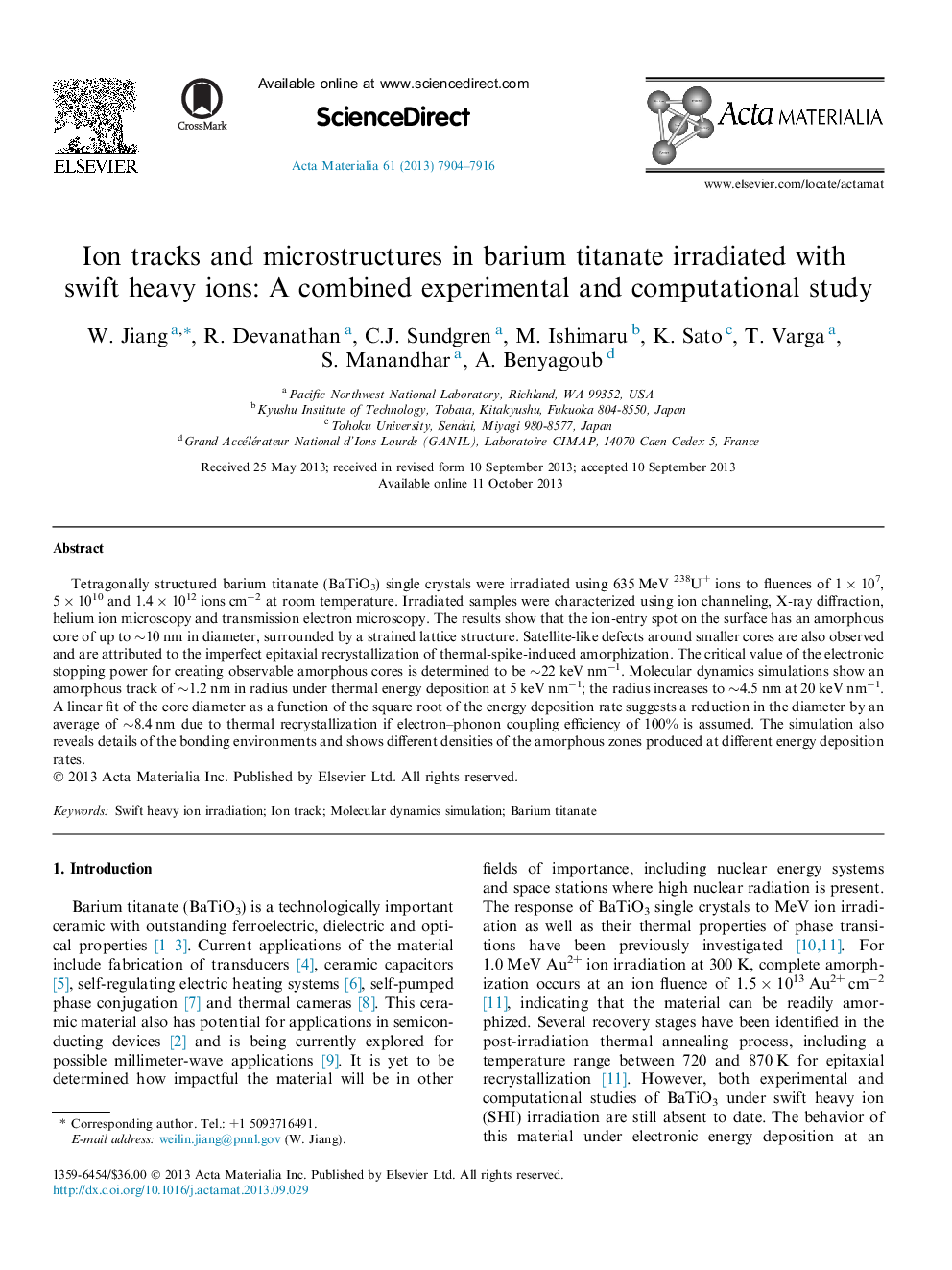| کد مقاله | کد نشریه | سال انتشار | مقاله انگلیسی | نسخه تمام متن |
|---|---|---|---|---|
| 1446209 | 988601 | 2013 | 13 صفحه PDF | دانلود رایگان |

Tetragonally structured barium titanate (BaTiO3) single crystals were irradiated using 635 MeV 238U+ ions to fluences of 1 × 107, 5 × 1010 and 1.4 × 1012 ions cm−2 at room temperature. Irradiated samples were characterized using ion channeling, X-ray diffraction, helium ion microscopy and transmission electron microscopy. The results show that the ion-entry spot on the surface has an amorphous core of up to ∼10 nm in diameter, surrounded by a strained lattice structure. Satellite-like defects around smaller cores are also observed and are attributed to the imperfect epitaxial recrystallization of thermal-spike-induced amorphization. The critical value of the electronic stopping power for creating observable amorphous cores is determined to be ∼22 keV nm−1. Molecular dynamics simulations show an amorphous track of ∼1.2 nm in radius under thermal energy deposition at 5 keV nm−1; the radius increases to ∼4.5 nm at 20 keV nm−1. A linear fit of the core diameter as a function of the square root of the energy deposition rate suggests a reduction in the diameter by an average of ∼8.4 nm due to thermal recrystallization if electron–phonon coupling efficiency of 100% is assumed. The simulation also reveals details of the bonding environments and shows different densities of the amorphous zones produced at different energy deposition rates.
Journal: Acta Materialia - Volume 61, Issue 20, December 2013, Pages 7904–7916